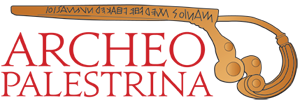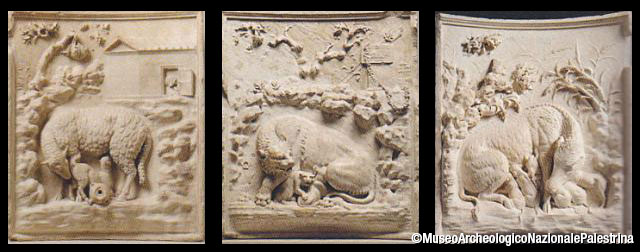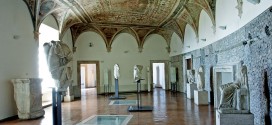This plate belongs to a series of reliefs that are named after the first owner and which are now kept in the Kunsthistorisches Museum of Vienna. In ’70, repurposed in a building of the late Imperial age, was found the prenestin semple of Grimani Reliefs exhibited at the National Archaeological Museum of Palestrina together with marble copies of Viennese reliefs.
Works dated from Augustan age represent scenes of motherhood in animal world set in a lush vegetation. The highest quality production, connects Grimani Relifes to same workshop that made Ara Pacis Augustae in the Campus Martius at Rome.
Moreover the theme of rich and luxuriant nature was connected, in Augustan propaganda, to that of Peace – that the first emperor brought back to Italy after nearly a century of discordances and civil war. The time of peace allowes people to grow crops, raise animals and produces wealth; in this way “fruits” of peace are representing one on the main monuments of the Empire, and the Prince underlines his role as guarantor and restorer of order and security and therefore of wealth from these depended.
An accredited hypothesis attributes the Grimani Reliefs to the decoration of the monument of Verrius Flacco, a fountain dedicated to the Prenestin fellow citizen, the famous grammarian and tutor to the heirs of Augustus, on which were inscribed the Fasti Prenestini. According to this hypothesis, the monument would be officially recognized in a semicircular fountain which was founded at the beginning of Twentyeth Century, and situted below the Regina Margerita Square (Piazza Regina Margherita), corresponding to old Forum of the city. The curved shape of the Grimani Reliefs presupposes a circular wall for the insertion of the plates.
 Archeopalestrina Percorso archeologico di Palestrina, l'antica Praeneste
Archeopalestrina Percorso archeologico di Palestrina, l'antica Praeneste

